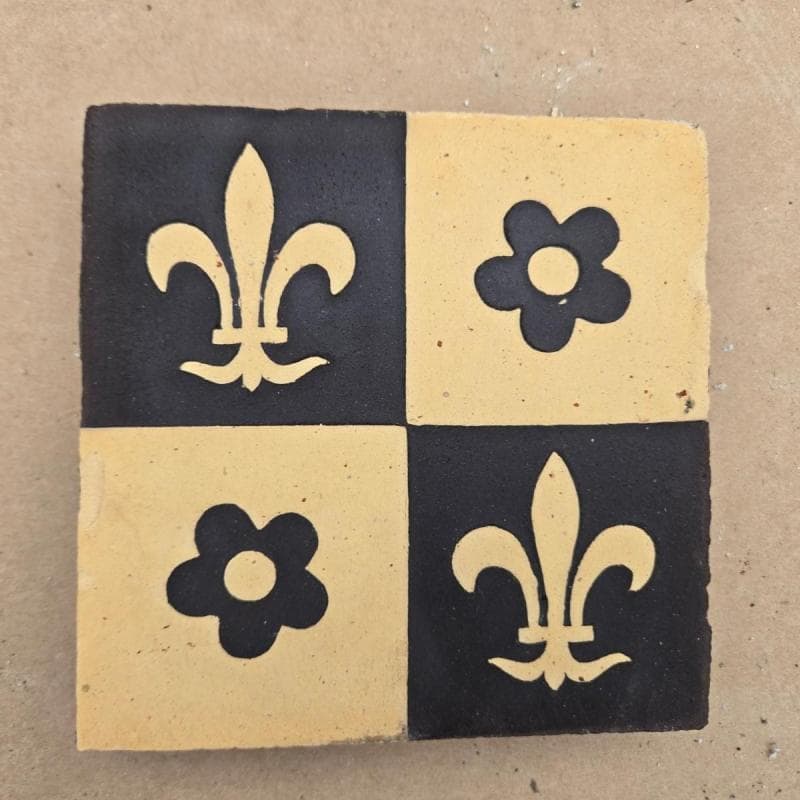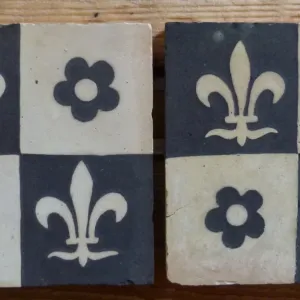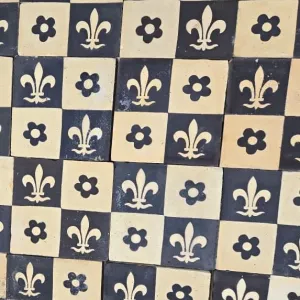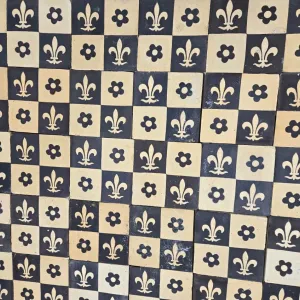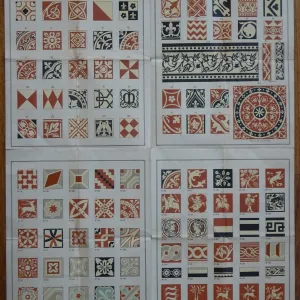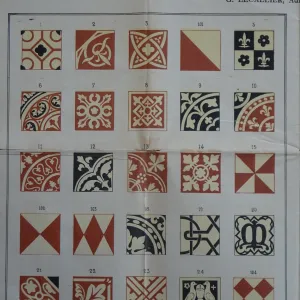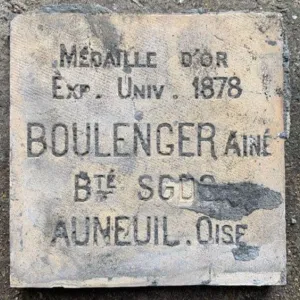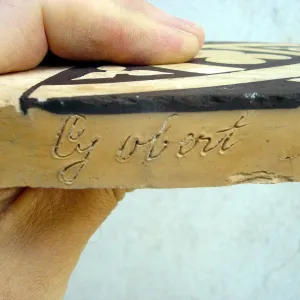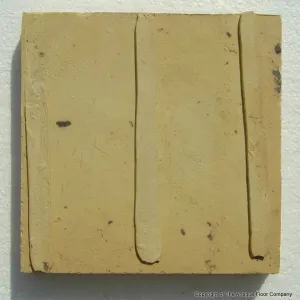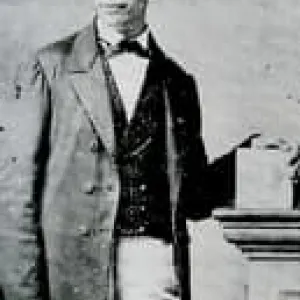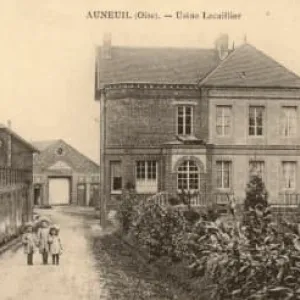Late 19th-Century Handmade Boulenger Tiles – Heraldic design
Emanating from the renowned and award winning Société Anonyme de Produits Céramiques Boulenger in Auneuil, Oise, this evocative collection of handmade tiles speaks to the refined tastes of the Belle Époque. Founded in 1867 Boulenger swiftly rose to prominence, its creations adorning churches, civic landmarks, and elegant private homes across France. Even the residence of Claude Monet in Giverny bears witness to their legacy, his home laid with Boulenger tiles.
Produced entirely by hand and often stamped on the reverse or signed discreetly along the edge, each tile is imbued with the touch of the artisan. Boulenger’s signature restraint in palette—limited to ochre, black, and the deep, earthy red of sang de bœuf—allowed for designs of striking clarity and grace. The set offered here features a heraldic motif, embracing the regal French fleur de lys, in ochre and black. Its geometric rhythm recalling medieval symbolism reimagined through a 19th-century lens.
Comprising approximately 99 square feet, this collection includes 461 tiles, all in good condition. A number display edge nibbles or modest chips, signs of age that lend the ensemble an authentic, antique patina charm. Additionally, a substantial quantity of free rejected tiles is included—perfect for cuts during installation.
It is recommended that these tiles be sealed with a ceramic protectant following installation to ease cleaning. Once laid, they will not only serve as a durable surface but as a living canvas of French ceramic history.
Note:-
Our antique tiles were originally handmade in single or two tile molds. Pre-computer fabrication these molds were machined by hand & the colour slips to create the tile were mixed by measure and eye. When firing the tiles, the kiln temperatures of c.1,100F degrees could also be variable. The result of this production process is that tiles made during this period of non-automation often display subtle size & thickness variations and there can be tonal variations in colors, all of which add to their charm and uniqueness. When photographing a floor, we always take a random section so that it is representative of the whole in tones and patina.
A rigorous quality control during the restoration process will include in the sale any tiles with groutable small chips and edge nibbles, expected of tiles more than 100 years old, but include for free any with larger defaults as rejects, which the tiler can then use for offcuts.
Can we help?
If you can provide a technical drawing, or a simple sketch with key dimensions, we are happy to assist in evaluating and recommending the best layout of the floor in your area of choice. Click here for more details
